Originally bred for farm work and sheep herding, the Dutch shepherd is an active, intelligent, self-sufficient dog.
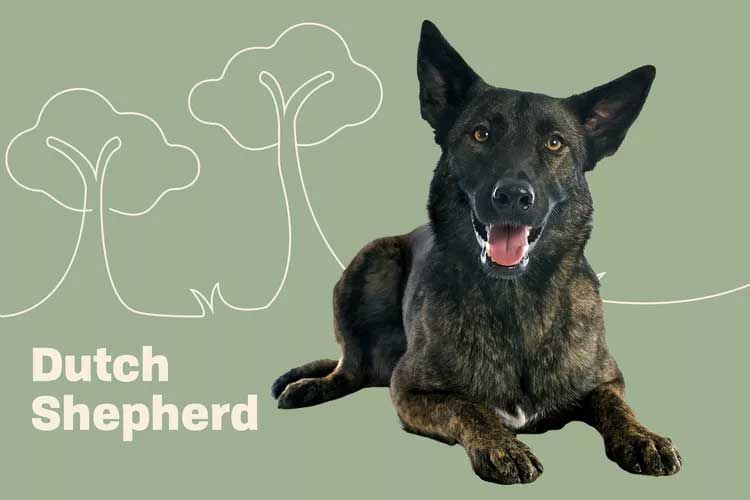
Dutch Shepherd Overview
| OFFICIAL NAME | Dutch Shepherd |
| COMMON NAME | Dutch Shepherd |
| PET HEIGHT | 21 to 25 inches |
| PET WEIGHT | 42 to 75 pounds |
| LIFESPAN | 11 to 14 years |
| GOOD WITH | children, dogs, families |
| TEMPERAMENT | outgoing, playful |
| INTELLIGENCE | high |
| SHEDDING AMOUNT | normal |
| EXERCISE NEEDS | high |
| ENERGY LEVEL | active |
| VOCAL LEVEL | when necessary |
| DROOL AMOUNT | low |
| BREED GROUP | none |
| BREED SIZE | large (61-100 lbs.) |
| COAT LENGTH | long, short, wiry |
| COLORS | black, blue, gray, white |
| PATTERNS | brindle |
| OTHER TRAITS | cold weather tolerant, easy to train, good hiking companion, strong loyalty tendencies |
Once nearly driven to extinction, the Dutch shepherd is a rare breed of dog from the Netherlands. At first glance, the Dutch shepherd is easy to confuse with his German cousin, but there are distinct differences between the two breeds, both physically and in temperament.
Originally used for keeping watch over sheep and cattle, the Dutch shepherd is a dog that is highly intelligent, incredibly loyal, and remarkably self-reliant. Whether you need a farmhand or loving family companion, these smart, athletic, highly trainable dogs are eager to please.
Appearance
The easiest way to tell the difference between Dutch shepherds and German shepherds is by the coat: The brindle coloration is exclusive to the Dutch shepherd. Additionally, Dutch shepherds are smaller than their German cousins, with both male and female dogs clocking in around 2 feet tall and between 45–75 pounds, according to the Dutch Shepherd Dog Club of America (DSDCA). Just as well-muscled as German shepherds, Dutch shepherds have a slightly stockier appearance with a head that can appear more boxy.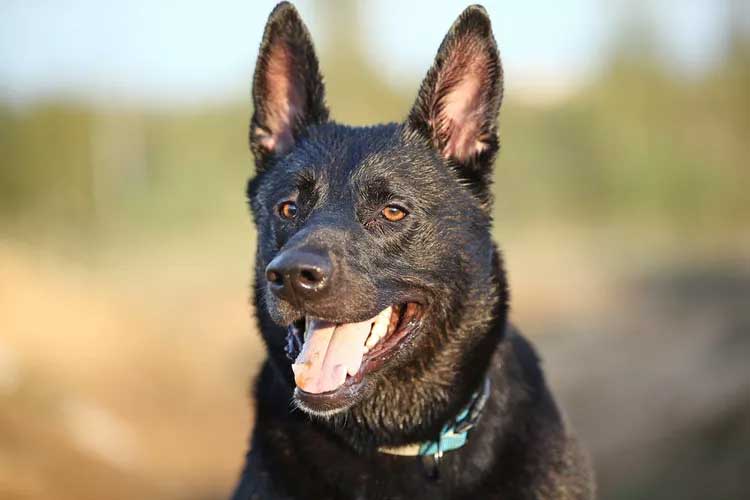
But back to that coat. The brindle pattern can appear in a variety of colors. In fact, in their original 1898 breed standard guidelines, the coat is specified as "appearing in any color." Coat coloration has since been refined to the darker end of the palette, with black, gray, silver, and rust being the most common colors, though a rare white variant is also possible.
The coat is also noteworthy for coming in three different hair types: short, long, and rough.
The short-hair coat is close fitting across the dog's entire body and is paired with a wooly undercoat.
The long-hair coat is made up of straight, thick hair that can be harsher to the touch and the same wooly undercoat.
The rough-hair coat is a dense, harsh, tousled coat with a wooly, dense undercoat all over the body except for the head.
While the different coats function the same way in terms of keeping the Dutch shepherd warm and dry, they all provide distinctly different visual appearances and require different grooming regimens as well.
Temperament
If you're looking for a dog to teach, you've found a great contender. The Dutch shepherd is an incredibly intelligent dog that can learn tricks easily and participate in agility or flyball competitions. Because of their high intelligence, you'll be best served training your Dutch shepherd in short bursts with little repetition. Keep your training sessions varied and fun, and these dogs will keep coming back for more. They thrive on mental stimulation, so once you get past the obedience basics, you'll find them getting more excited about training as your cues get more complicated.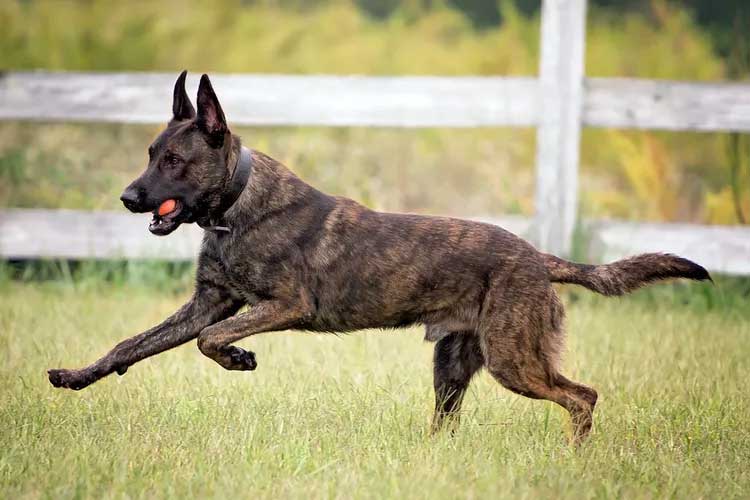
"General tips for training a high-energy dog such as a Dutch shepherd include using positive reinforcement, incorporating play and problem solving, and giving your dog plenty of exercise as an outlet for their energy level," says Emily Singler, DVM, staff veterinarian for Fetch by The Dodo. "Avoid any form of punishment, as this does not help a dog to learn new behaviors and will instead cause more stress and anxiety and may damage the human-animal bond."
If you don't want to spend a lot of time training, however, you may want to choose a different dog breed. If these naturally independent dogs aren't trained properly to obey commands, they're apt to develop independent streaks and be a handful.
"Before bringing one home, a potential adopter should consider their lifestyle and living arrangements to determine if they are a good fit for a Dutch shepherd," Singler says. "Those who are able to devote time and energy to training and exercising their dogs, and those who have land or the ability to engage in an active lifestyle with their dogs, will be well-suited to care for a Dutch shepherd."
Though bred to work on the farm, Dutch shepherds found a second life as a police and military dog. Dutch shepherds who have completed certified training through the Royal Dutch Police Dog Association are highly sought after by police forces around the globe for their intelligence and trainability, as well as their naturally high drive.
Living Needs
Dutch shepherds need plenty of exercise and mental stimulation. Although you can have a Dutch shepherd in an apartment (so long as he can get lots of regular exercise time every day), a farm or house with a fenced-in yard is ideal. Dutch shepherds will happily run or hike with their owners, and they have the strength and stamina to go all day long.Similarly, if you have ever wanted to get into athletic competitions for dogs, the Dutch shepherd is the perfect breed. They are athletic enough for agility and flyball competitions, while being large and strong enough to do tracking, herding, and weight-pulling as well. But keep in mind that without something to keep them active and interested every day, they're likely to start finding their own interests and become aloof to your cues.
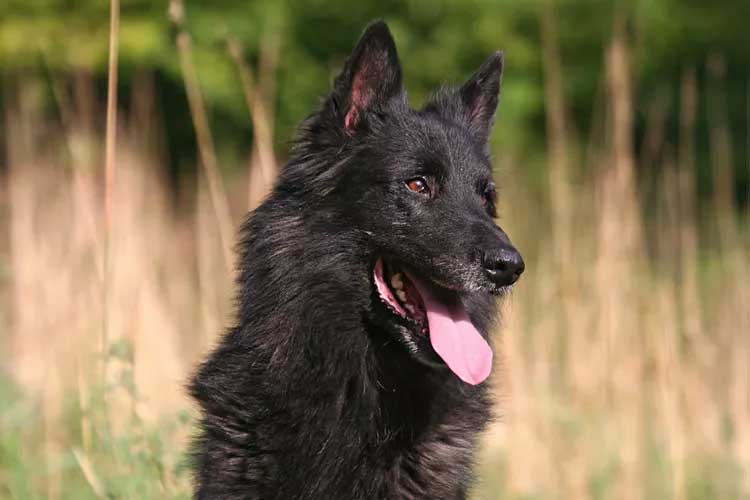
Though not used for the task much anymore, the Dutch shepherd's instinct is still as a herding dog, so they work and live well with other dogs and livestock. They may not cuddle up to cats, but their relatively low prey drive means they aren't likely to find them very fun to chase either, especially if they're trained and socialized early.
The Dutch shepherd is a deeply loyal, eager to please breed, so most family groups will work for these dogs, including households with children. But, Singler says, puppy playtime always needs to be supervised.
"Since Dutch shepherds are high-energy dogs, they may want to engage in more vigorous play than is appropriate for some children or other animals," she says. "Always exercise caution when introducing a dog of any breed to other animals, and don't leave them unsupervised until you are confident they will interact together safely."
They can also make eager and steadfast companions for seniors, though attention will have to be paid to their physical needs, as they are an athletic breed with a high stamina level.
Care
How you take care of your Dutch shepherd is going to depend largely on what kind of coat he has. Dogs with short hair require a simple brushing every week and a half or so. Dutch shepherds with long hair, on the other hand, need to be brushed weekly. Both types will need additional brushings in spring and fall when their undercoat sheds, as well as occasional baths.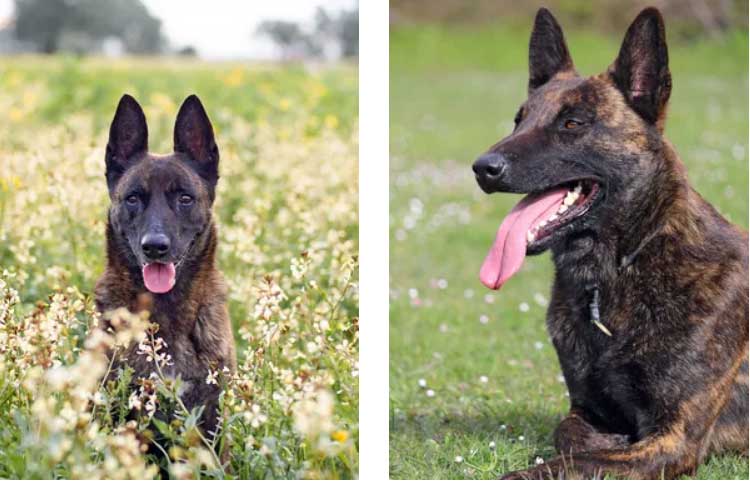
Rough-haired shepherds are a little more labor intensive, with brushing twice a week and baths every three to four weeks. During the shedding seasons, because their coats are so thick and textured, regular brushing won't cut it; you'll need to maintain their undercoat with hand stripping, a process where hairs are removed at the root.
Along with grooming, exercising your Dutch shepherd is an important part of his care. These are dogs that won't be satisfied with a daily walk—they need much more heart-pumping activity.
"Dutch shepherds need to be able to run, play, and maintain a high level of physical activity to be happy and healthy," Singler says. "They also need mental stimulation. This can come in the form of play where they have to problem-solve, an activity such as agility training, or even a job such as herding livestock on a farm."
Health
Dutch shepherds are a healthy breed overall and aren't likely to have serious health conditions, says Audrey Ruple, DVM, Fetch by The Dodo Veterinarian Advisory Board Chair."In fact, compared to Belgian and German shepherds, Dutch shepherds are far less likely to have elbow [dysplasia] or hip dysplasia, heart arrhythmias, tumors, or gastrointestinal disorders including those that cause vomiting and diarrhea," Ruple says.
However, Ruple says Dutch shepherds are more likely to have skin conditions such as atopic dermatitis and skin allergies than their Belgian and German cousins.
"Knowing the pedigree of the dog is also helpful," says Michelle Beck, DVM, CCRT, CVA-Veterinarian, with the Backlund Animal Clinic in Omaha, Neb. "Any reputable breeder should be able to provide that for all the pups they're selling."
For optimal health, keep your Dutch shepherd at a lean weight and give them an appropriate diet.
History
Dutch shepherds have lived in the Netherlands for centuries, according to the American Dutch Shepherd Association (ADSA). In the 19th century, Dutch breeders began enhancing the breed with outside genes to build upon the dog's strength, speed, and agility, while not losing any of the inherent intelligence and independence. The first breed standard, created in 1898, made mention of the dogs appearing in "any color" but by 1914 Dutch shepherds had been uniformly brindle as a way of differentiating them from their German and Belgian cousins.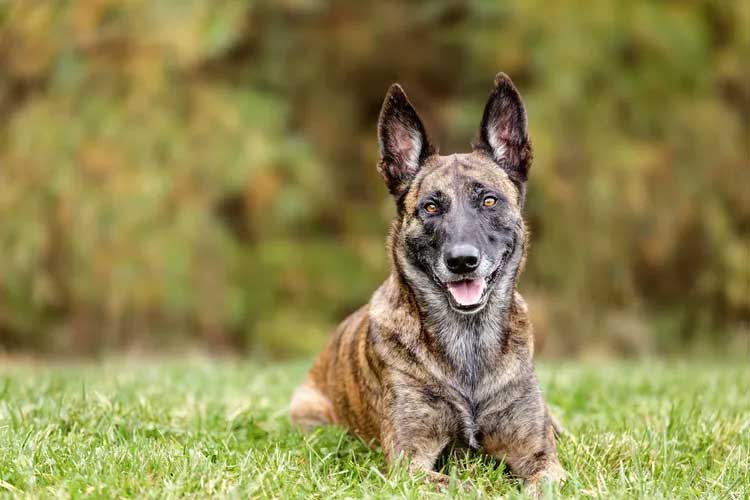
Used almost exclusively as farm and shepherding dogs, the Dutch shepherd was suddenly a breed without a job by the beginning of the 20th century, as industrialization and land reclamation in the Netherlands virtually eliminated large sheep herds. As their use declined, so did the breed's popularity. This, combined with dog breeding coming to a virtual halt in the Netherlands during World War II, drove the Dutch shepherd nearly to extinction by the 1950s.
In the latter half of the 20th century, the dog began to make a comeback not only as a family pet but also developed a second calling as a service dog. Today, though still a rare breed, Dutch shepherds are familiar faces as search and rescue dogs, police K-9 units, and as seeing-eye dogs. They will also herd sheep.
Fun Facts
Dutch shepherds nearly became extinct in the 1950s.In the latter half of the 20th century, Dutch shepherds found a new calling as service dogs.